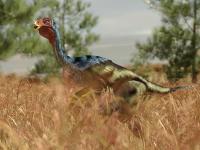2.1-Million-Year-Old Stone Tools Unearthed in China

Archaeologists working in the southern Chinese Loess Plateau have unearthed stone tools crafted at least 2.1 million years ago by early humans. The discovery, reported in the journal Nature, implies that early humans left Africa earlier than indicated by evidence from Dmanisi, Georgia.
The stone tools were discovered at a Paleolithic locality called Shangchen in the Loess Plateau, near Gongwangling in Lantian county, by Professor Zhaoyu Zhu from the Chinese Academy of Sciences and colleagues.
The oldest artifacts are about 2.12 million years old — 270,000 years older than the skeletal remains and stone tools from Dmanisi, which were previously the earliest evidence of humanity outside Africa.
“The artifacts include a notch, scrapers, cobble, hammer stones and pointed pieces; all show signs of use,” Professor Zhu and co-authors said.
“Most were made of quartzite and quartz that probably came from the foothills of the Qinling Mountains 3 to 6 miles (5-10 km) to the south of the Shangchen site, and the streams flowing from them.”
At the site, the researchers also unearthed 2.12-million-year-old fragments of animal bones.
“The Loess Plateau, also known as the Huangtu Plateau, covers about 104,000 sq.miles (270,000 km2), and during the past 2.6 million years between 330 and 984 feet (100-300 m) of wind-blown dust — known as loess — has been deposited in the area,” they said.
“The 80 stone tools were found predominantly in eleven different layers of fossil soils which developed in a warm and wet climate.”
“A further 16 items were found in six layers of loess that developed under colder and drier conditions.”
“These 17 different layers of loess and fossil soils were formed during a period spanning almost a million years.”
“This shows that early humans occupied the Loess Plateau under different climatic conditions between 1.2 and 2.12 million years ago.”
_____
Zhaoyu Zhu et al. Hominin occupation of the Chinese Loess Plateau since about 2.1 million years ago. Nature, published online July 11, 2018; doi: 10.1038/s41586-018-0299-4
Source: www.sci-news.com








